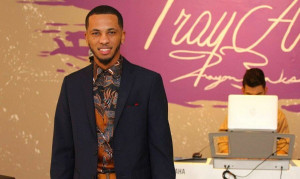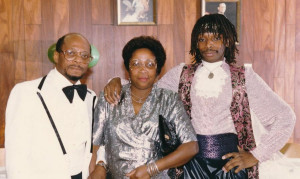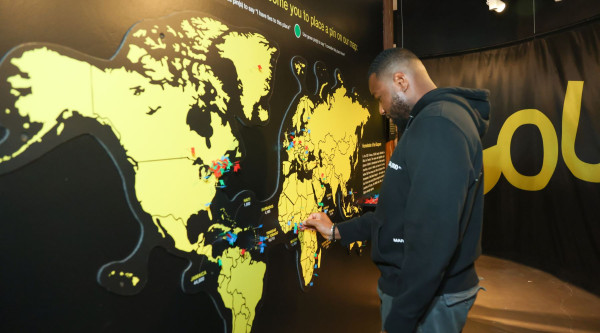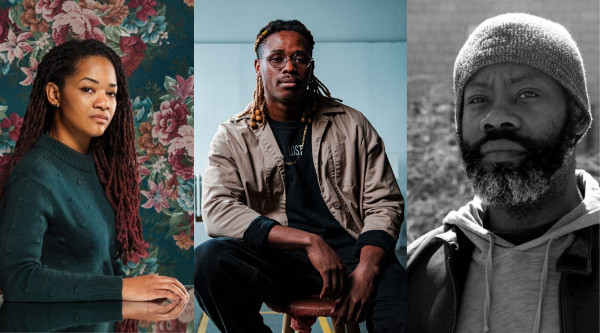For readers not familiar with your work, please describe your latest series of portrait paintings.
The constant thread in my work has been about the representation of Black people, mostly focusing on Black men. I’m working on two series right now. One makes its debut in the Spring and is based on visually representing the value placed on Black bodies in Western society. I’m not just confronting stereotypes, but addressing the social values placed on our community by asking what our worth is to other people, and addressing the snap judgments that are made when we’re seen by others. The other pieces I’m working on are more about giving myself permission to create works that are a little bit explorative. So instead of having one consistent narrative, the themes might meander a bit based on what’s inspiring me at that moment. I just want to see where my creativity takes me.
To someone on the outside looking in, it would appear you’ve had a lot of success as an artist in Canada to date. Are there any times as a self-taught artist where you’ve felt like that’s held you back or negatively impacted you in an institutional sense?
The definition of success is purely subjective. I know that I’m successful in the sense that I have the freedom to create the work that I want, and it will find its way to the marketplace. I do feel like there are some issues with regard to what is called “outsider art.” One of the ways that term is used is to describe a self-trained artist. I suppose, in that way, I would be considered an outsider artist. I went to Mickalene Thomas’s lecture at the AGO when she was in town, and she referred to an instance when she was working on her PhD, and was still called an outsider artist** by one of her professors. So, to my observations, to be described as an outsider artist is also code for artists who are Black or People of Colour. Aside from that, I’m also 53 and someone who is painting later in life, and I think that maybe something that’s less attractive for private and institutional galleries. What I’m hearing from insiders in the art world is commercial galleries like to have that feeling that they’ve discovered someone younger, so they can mould that artist and feel responsible for their success. I don’t really fit into that mould. So my focus was attending art fairs with the intention of eventually catching the attention of a commercial gallery. Having a full-time job as an educator allows me the opportunity to explore representational art that speaks to me, without having to worry about surviving off my work. The pressure to sell can obviously wreak havoc with someone’s sense of self-direction. I didn’t have commercial galleries kicking down my doors, though I’m happy to say that after years of feeling like an outsider, I’m finally being represented by a wonderful gallery called United Contemporary.
On a TVO show last year on the theme of “Reinventing The Museum” you said, “it’s important to teach children to question what they see and what’s being presented; to realize that there are different perspectives.” That being the case, and considering that some of the people coming out of institutions like OCAD may likely end up showing or working in museums, do you think there’s a need to reinvent the curriculum in institutions like OCAD university?
Most definitely. The challenge is making something like Fine Art appealing to BIPOC students because they still don’t see themselves accessing those spaces. When I’ve done the Toronto Outdoor Art Fair, I’ve met so many Black people who were literally saying, “we didn’t know we could do this.” Here’s another experience I’ve had. In order to be selected for a booth at the outdoor fair, you have to submit work for consideration. I’ve been rejected multiple times. When I submitted 3 summers ago, I was finally accepted. The next year I submitted however, I was rejected, and this was the same year my work was hanging in the ROM.
(Laughter)
...and you reacted the way most people do when they hear that story - with laughter.
Wow.
Knowing that I had a piece in the ROM, and I couldn’t get into the most diverse city in the world’s art exhibition, was a bit difficult to comprehend. Not to say I’ve reached the pinnacle or anything, but when you asked about success…
Right.
...That was just two summers ago. So I outlined my concerns and emailed them. I tried to explain the emotional currency of having my work at the fair. Meaning, I didn’t sell a ton of work to 20-year-olds, but engaging with Black people in these spaces was invaluable to me. I also noted that there were only 5 Black artists with booths at the fair the year I was there, again, in the most diverse city in the world. Then the next year I apply, I’m rejected?
...While you’re showing at the ROM.
I mentioned that too. Of course, that doesn’t entitle me to a spot, but there was something weird about that. They didn’t immediately respond to my email. So I found them on Instagram and commented that I hadn’t heard back from them, to which they responded they were crafting a response. I didn’t hear from them after that either. Then, this year there was an addendum on their application form talking about diversity and their commitment to equity. I was invited to apply this year and was accepted.
You’re giving a talk to OCAD University students this month. You’re also an elementary school teacher. How do you prepare to give a talk about artistic process to adults, differently than you would an elementary school students? Are there some things that overlap?
One of the key things I try to do as a teacher and speaker is to be myself. So I’m pretty much Gordon all the time. Whether kids or adults, I just try to be authentic. I also always reflect on everything that’s brought me to this point when I’m speaking. When I talk about the artistic process with adults, a lot of it centers on how I was raised and understanding the importance of representation. As a teacher, we talk about critical thinking. My parents were both teachers, and even before that term was invented my parents were already teaching me how to think critically. That usually involved seeing what wasn’t represented, and usually that ended up being us. So when I started painting it really gave me the opportunity to increase our presence in Canada, and hopefully inspire other people to do the same. I’m actually very grateful I started painting later in life because I think all my life experiences are coming out in my work right now.
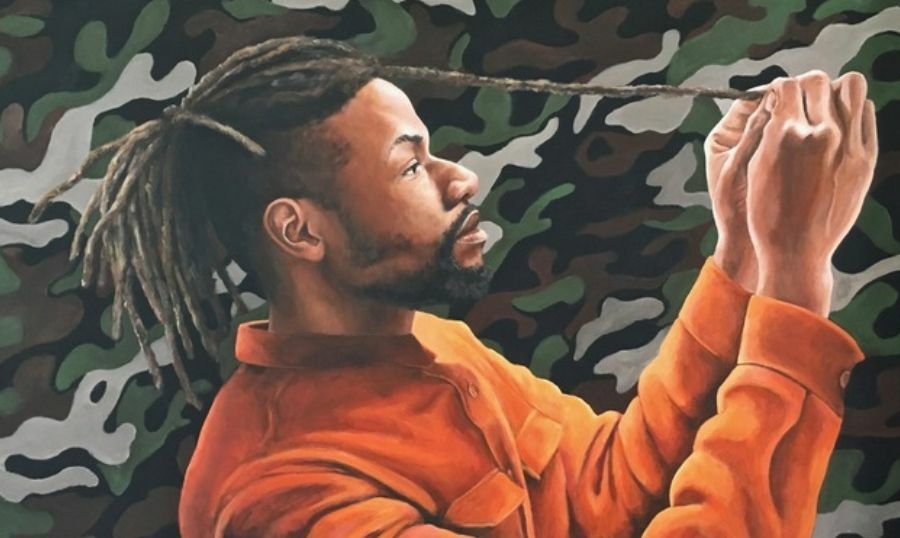
GORDON SHADRACH | "CROSSHAIRS"
Have you experienced imposter syndrome, and how do you navigate through that?
I’ve had imposter syndrome my entire life, especially because I wasn’t represented. Living in Canada there’s this idea of being humble, which I think ties into imposter syndrome. I always consider myself a humble Canadian who never wanted to overstate my abilities or give myself enough credit for what I’ve developed. A lot of it is chalked up to luck or connections, which is part of it; but you can’t chalk it all up to that. As an artist creating original work, it was very challenging for me to accept that people actually liked my aesthetic. It took years to get past that. Even when I was showing work at the ROM, I kept saying “I can’t believe I’m here” so much, that other artists in the group show had to eventually tell me to get over it. I’m also a person motivated by the word “why.” Why am I here? Why am I in this space? As opposed to just saying, “I’m here because they liked my proposal and I can paint,” I start looking at other possible contributing factors. There also aren’t a lot of realistic Black portrait painters in Canada, so while I’m learning to accept the fact that I have talent and people respect what I do, I also have to look at the big picture. This sometimes works for, or against me, when it comes to feeding imposter syndrome. I think you have to find the balance of looking at your work critically and believing in yourself, but not giving in too much to self-doubt.
As a self-taught artist, how does it make you feel to be giving a talk about your process to students and academics in an arts university?
It’s kind of mind-boggling really. I didn’t study painting because I didn’t think I could. As a young person, I never saw anybody who looked like me doing anything artistic that I thought of as being cool. Even when I went to art school, the last thing I would’ve considered was drawing and painting. I ended up studying textiles. So, even though I don’t have any formal training, it’s life-affirming that I have this opportunity to encourage people who aren’t normally represented in these spaces to pursue their passions. I went to a dinner event hosted by Dori Tunstall, OCAD’s Dean of Design, where people were sharing their experiences in the art and design world. Hearing 23-year-old Black men say, “I just want to be heard, and this is the first person that made me feel heard,” was crushing. To know that there are people in 2019 who, because of the colour of their skin, still feel they don’t have the basic right to express their ideas and be taken seriously is just ridiculous. So I’m glad that I’m a part of the movement to, hopefully, eradicate that.
How We Paint Artist Series Talk - Gordon Shadrach
Thursday November 21, 2019
OCAD University - Room 230
6 pm - 8 pm
References:
1-The Art World Often Excludes Black Women. Mickalene Thomas’s Superpower Is Making Them Visible (Amanda Parris for CBC Arts)**
Know a Black Canadian artist we should feature? Email us: info at byblacks.com
Byron Armstrong is a writer living in Toronto who has been published online and in print, for both local and national publications. He writes essays, short stories, opinion pieces, and in depth interviews. His general musings can be found on Twitter as @ByronArmstrong6
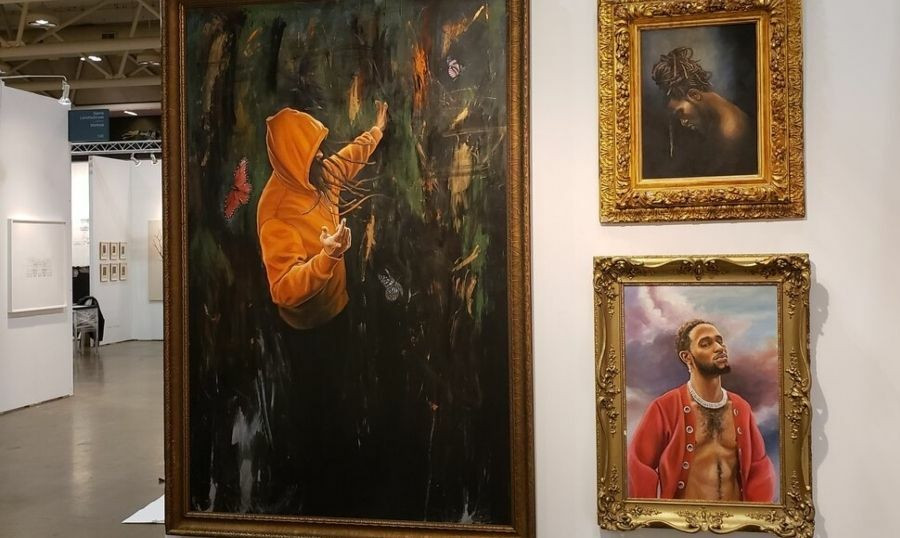
 By
By 




